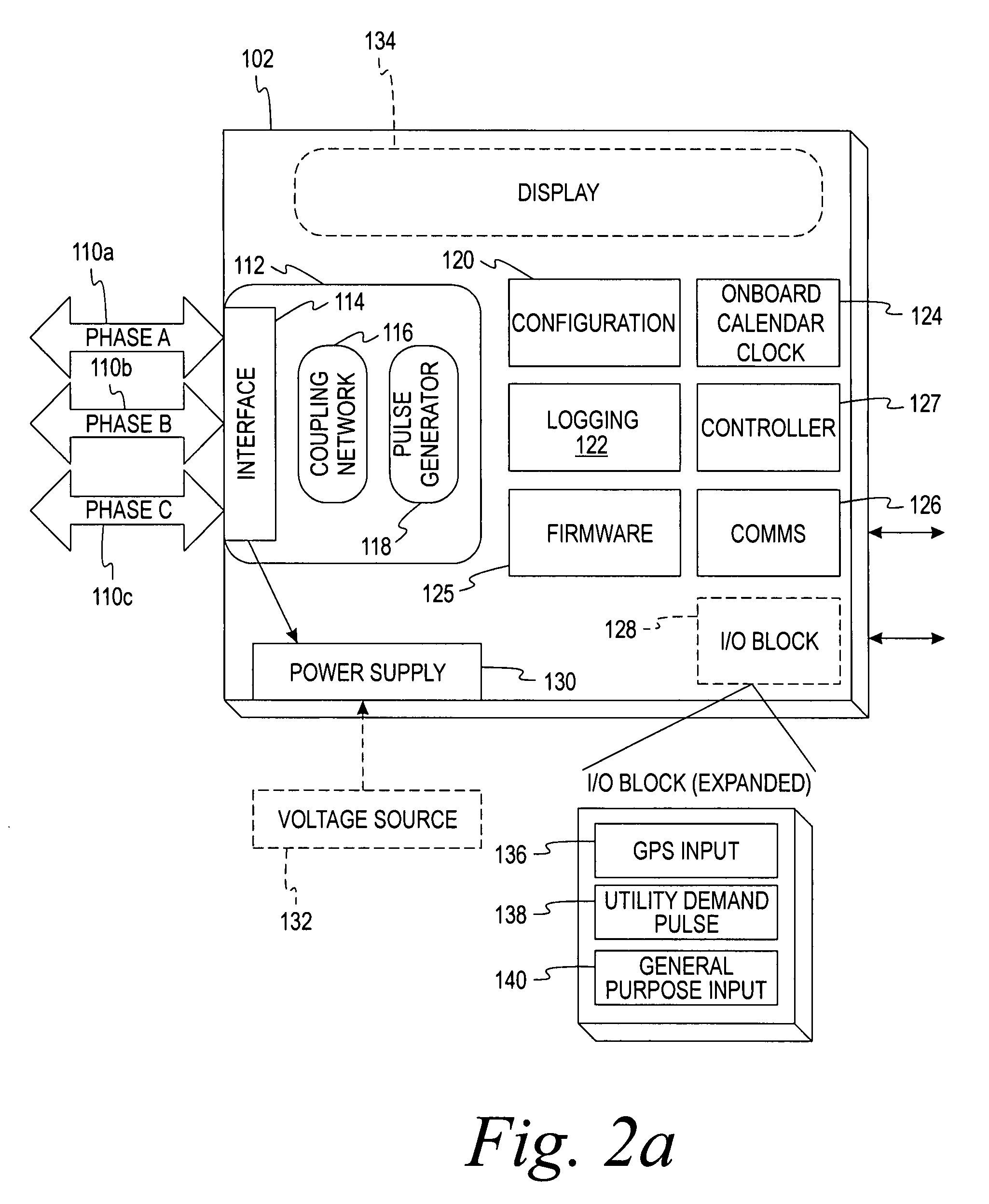Method and apparatus for synchronizing data in utility system
a utility system and data synchronization technology, applied in the field of utility systems, can solve the problems of insufficient time homogeneity in practical applications, insufficient timetamps to accurately describe temporal moments, and insufficient measurement data scalar without context of when
- Summary
- Abstract
- Description
- Claims
- Application Information
AI Technical Summary
Benefits of technology
Problems solved by technology
Method used
Image
Examples
Embodiment Construction
[0023]Aspects of the present invention not only enhance existing data alignment capabilities in meters, but also implement time-keeping / time-stamping on metering devices that lack an on-board clock. Furthermore, aspects of this invention provide a method of time-keeping / time-stamping for monitoring devices that lack an on-board clock. Aspects of the present invention allow monitoring devices of varying capabilities to all be aligned to a common time reference. For example, some monitoring devices may lack both external communications capability and an on-board clock. Other monitoring devices may have one or both such capabilities. A monitoring device is a device having the ability to sample, collect, or measure the operational characteristics of a utility system.
[0024]An important aspect of the present invention is a novel time synchronization device, or “TSD,” which in general, couples onto the power distribution conductors a synchronization signal (also referred to herein as a “TS...
PUM
 Login to View More
Login to View More Abstract
Description
Claims
Application Information
 Login to View More
Login to View More - R&D
- Intellectual Property
- Life Sciences
- Materials
- Tech Scout
- Unparalleled Data Quality
- Higher Quality Content
- 60% Fewer Hallucinations
Browse by: Latest US Patents, China's latest patents, Technical Efficacy Thesaurus, Application Domain, Technology Topic, Popular Technical Reports.
© 2025 PatSnap. All rights reserved.Legal|Privacy policy|Modern Slavery Act Transparency Statement|Sitemap|About US| Contact US: help@patsnap.com



